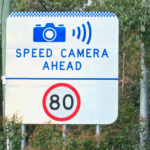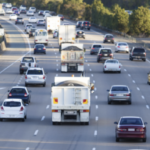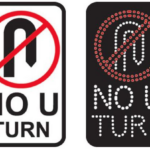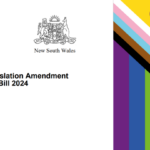New Road Rules and Driving Offences Come Into Effect Across Australia
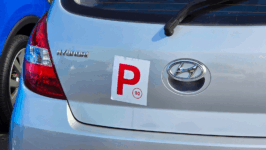
A suite of new traffic laws came into effect on 1 August 2025 which relate to a range of road rules and traffic offences.
More than 60 amendments have been made to a number of pieces of legislation, including the Road Rules 2014 and Road Transport Act 2013 in New South Wales, and their counterparts in other jurisdictions.
Governments across Australia have marketed the changes as necessary in order to make our roads safer, pursuant to the National Roads Safety Strategy 2021 to 2030 and its ‘Vision Zero’ objective of reducing deaths and serious injuries on the nation’s roads.
The main areas of change
Among other things, the reforms impose stricter rules for L and P plate drivers, overseas drivers, and drivers aged 60 years and over, and introduce associated offences for their contravention.
Speed limits of 30km/h will be introduced in many school zones (down from 40km/h) and busy foot traffic areas, as well as 40km/h limits in some neighbourhoods (down from 50km/h).
New South Wales and Victoria will also introduce dedicated EV lanes during peak hours for those who drive electric vehicles.
A closer look
Here’s a closer look at the new rules:
Night driving curfew for P1 Drivers
P1 drivers nationwide are no longer permitted to drive between the hours of 11pm and 5am, although exceptions are in place for employment and education purposes.
Stricter passenger rules for P-platers
P1 and P2 drivers are only allowed to have one passenger aged 16 to 21 years in the vehicle, unless a licensed adult is also in the vehicle.
Zero-tolerance for phone usage by P-platers
P-plate drivers are no longer permitted to use mobile devices whilst driving, whether or not mounted. This includes wearable technology.
Hazard perception testing
P1 drivers must pass a hazard perception test to obtain a P2 licence.
Extended probationary period for P2 drivers
A number of jurisdictions have extended the probationary period for P2 drivers from 24 to 30 months before eligibility for a full licence.
Learner driver hours
Learner drivers are now required to complete 150 hours of supervised driving (up from 120 hours) which must include a component of night-time driving.
Overseas drivers
Overseas drivers with limited verifiable driving history are required to complete a probationary driving period incorporating the conditions of a P1 licence.
Harsher mobile phone penalties
Penalties have increased nationwide for illegal mobile phone use while driving.
The penalty in New South Wales is now up to $1,625 and 5 demerit points.
Speed limits when passing emergency and roadside assistance vehicles
All jurisdictions have now implemented reduced speed limits of between 25km/h (South Australia) and 40km/h when passing emergency or roadside assistance vehicles.
The speed limit in New South Wales is 40km/h when the posted speed limit is 80km/h or less.
Speed limits in residential areas
Speed limits in residential areas are being reduced from 50km/h to as low as 30km/h. These will be sign-posted.
Speed limits in pedestrian-heavy areas
Queensland is lowering speed limits in pedestrian heavy areas from 50km/h to 40km/h.
Upgraded seatbelt cameras
AI-equipped cameras will be able to detect whether any occupants of a vehicle is not wearing a seatbelt, including passengers in the rear seats.
EV-only lanes
New South Wales will introduce electric vehicle-only lanes on highways, which will apply during peak traffic hours.
Senior medical assessment
Drivers aged 60 years and over are now required to undergo a mandatory medical and vision test every three years until the age of 70.
Traffic offences
Fines and disqualification periods for traffic offences including reckless driving as well as drink driving and drug driving have been increased in a number of jurisdictions, making them broadly consistent across the nation.
Rules at a glance
| Category | New rules |
| P-plate drivers |
|
| P1 drivers |
|
| P2 drivers | Probationary period increased from 24 to 30 months |
| Learner drivers |
|
| Drivers aged 60 years and over | Must pass mandatory medical and vision test every three years until the age of 70 |
| Overseas drivers with limited verifiable driving history | Must complete conditions of P1 licence. |
| Speed limits |
|
| Electric vehicles | EV only lanes to be introduced in NSW and Victoria which apply during peak periods |
Offences at a glance
| Offence | Penalty |
| Illegal use of mobile phone while driving | Up to $1,625 + 5 demerit points (NSW) |
| Driving during curfew (P1 drivers) | $400 fine + 3 demerit points |
| Exceeding peer passenger limit (P-plate drivers) | $600 fine + 3 demerit points |
| Failing to display P-plates | $300 fine + 2 demerit points |
The rationale
Statistics in recent years suggest a slight increase in fatality and injury rates for motor-vehicle related accidents across Australia.
From July 2024 to July 2025, there was a 2.9% increase in road deaths nationwide, with the fatality rate currently 1.3% higher than the same time frame last year. The increase in hospitalisations, young-driver accidents, and senior driver accidents, is cited by governments are the rationale behind the sweeping new reforms.
Across Australia, the number and age-standardised rate of injury hospitalisations by car was by far the highest compared to other types of transport, showing that the car was the most widely-used — and, by default, the most dangerous — method of transportation. Cars were the types of transport most widely associated with injury hospitalisations, reaching 20,885 per 100,000 population.
Despite a decrease in injuries and deaths caused by transport between 2021 and 2023, the 2023-2024 year showed an upward trend of 65,189 injuries per 100,000 people and 1,425 deaths per 100,000 people nationwide.
And just last month in July 2025, there were 119 road deaths — a 17.1% increase when compared with the average July for the last five years.

